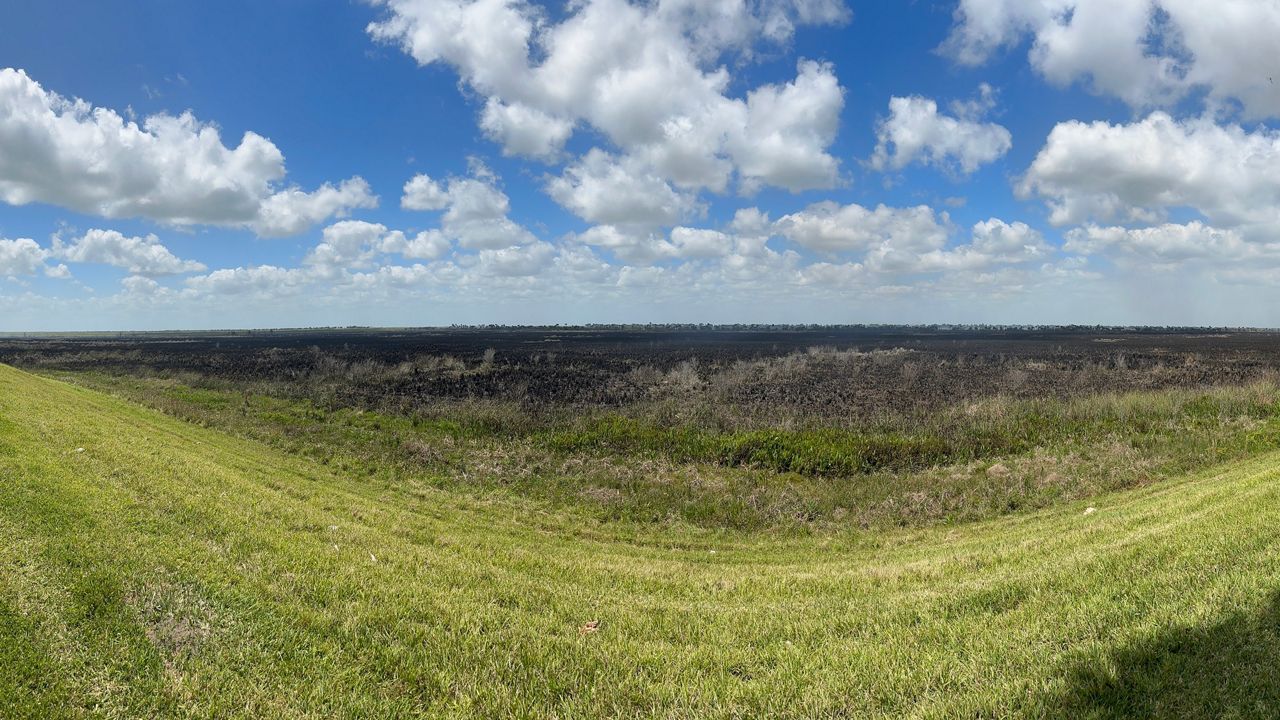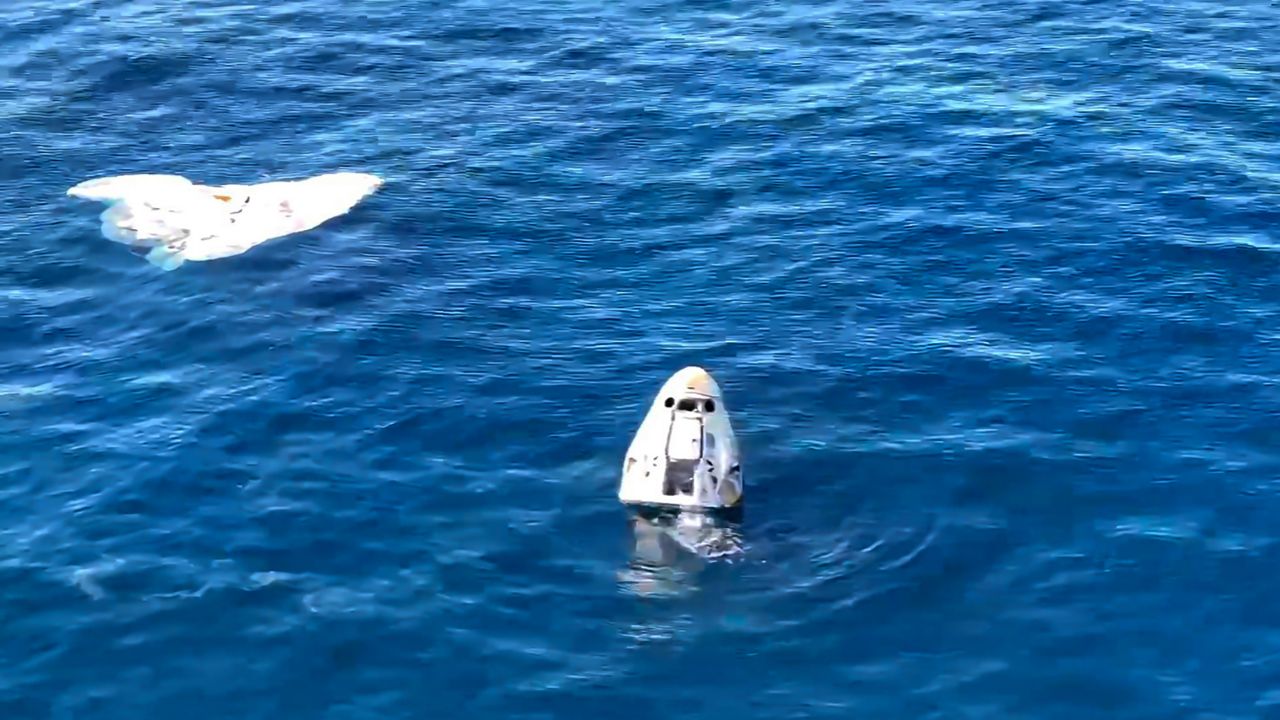Just as things started to get into a rhythm for testing NASA’s most powerful rocket a technical challenge forced the teams at Kennedy Space Center to stand down on Monday.
Known as the wet dress rehearsal, the process involves loading of the super chilled propellant into the Space Launch System (SLS) rocket and simulating the countdown. Neither activity was able to go on as planned. This was following a previous delay from Sunday.
The Artemis I team made the call at 5 p.m. EDT to suspend the countdown. About 50% of the liquid oxygen (LOX) had been loaded into the rocket when the call was made.
WDR is the last major test for the SLS rocket and Orion spacecraft before NASA can determine a launch date for the Artemis I mission.
Technical difficulties
Following a mission management team meeting early Monday morning, the go ahead was given to proceed with tanking operations at about 8:30 a.m. EDT. That’s the process of loading the over 730,000 gallons of cryogenic (super cold) fuel into the rocket.
It comprises about 196,000 gallons of liquid oxygen (LOX) and 537,000 gallons of liquid hydrogen (LH2).
Jeremy Parsons, the deputy manager of Exploration Ground Systems, the team overseeing WDR at KSC, noted a delay came up around noon during the Core Stage LOX chilldown or the “process to cool the propellant lines in preparation for tanking.”
The LOX tank has to be cooled to -297 degrees Fahrenheit, and the teams ran into what Parsons described as a “temperature limit for the LOX ahead of flowing into [the] Core Stage.” The teams were able to work on other items and look ahead to the LH2 loading operations to see if some of those could be done more in synch with the LOX chilldown.
Crews were able to proceed with the first part of the LOX loading, known as “slow fill” after 3 p.m. According to the original timeline, this step was set to take place at about 8:15 a.m. They were able to move to the “fast fill” stage around 3:30 p.m. EDT
“We fill the core stage slowly at first to bring the tank down to the extremely cold temperatures of the liquid oxygen and then we are able to fill it more quickly,” Parsons said in a 3:30 p.m. tweet.
NASA elected to not make operational audio of the WDR available to members of the press or the public, instead posting updates via Twitter and blog posts.
LH2 chilldown started around 3:45 p.m. to prepare the transfer lines and the Core Stage for the 537,000 gallons of -423 degree Fahrenheit LH2.
About 30 minutes later, before teams could start loading the LH2 into the rocket, “the team was unable to open a necessary vent valve on the 160th level of the mobile launcher,” Parsons tweeted.
He further clarified that “the issue is on an actuation and purge panel on the mobile launcher that supplies pressure for the Core Stage vent valve.”
Parsons said that after trying unsuccessfully to resolve the issue with the vent valve, Charlie Blackwell-Thompson, the Artemis I launch director, made the call to suspend the WDR test for Monday.
Parsons described the day as “a valuable learning opportunity”, and noted that “There is no substitute for testing with flight hardware [versus] models.”
A NASA blog post further clarified that, “Given the time to resolve the issue as teams were nearing the end of their shifts, the launch director made the call to stop the test for the day. A crew will investigate the issue at the pad, and the team will review range availability and the time needed to turn systems around before making a determination on the path forward.”
Economic opportunity
Many people beyond the gates of Kennedy Space Center are looking forward to the launch of the Artemis I mission, including the folks at the Courtyard Titusville – Kennedy Space Center.
The space-themed hotel is in the final days of preparation before it officially will open for the public on Friday, April 8.
General Manager Wayne Soard said that excitement is building, especially with the prospect of another Moon-class rocket on the literal and figurative horizon.
“Talking with people that have lived in this area their whole lives, they’ve explained how they’ve seen the different programs over the years and how it’s just really propelled since SpaceX and Blue Origin and now the Artemis program is ongoing,” Soard said.
The hotel, managed by the same company, Delaware North, that manages the KSC Visitor Complex, is the closest hotel to Launch Complex 39B, from where the Artemis missions will launch.
It also features space murals in each room and a mural honoring the Space Shuttle program in the workout center. A rooftop bar called “The Space Bar” is also available to both guests and general patrons and offers a clear view of the launch pads across the Indian River.
They, like many other businesses, are looking forward to the first launch of the Artemis program and are watching closely to follow the progress of the WDR and the next steps towards launch day.
What’s next?
NASA intends to hold a media teleconference on WDR on Tuesday, April 5, at about 4 p.m. EDT. NASA Deputy Administrator Pam Melroy is also scheduled to make remarks at the 37th Annual Space Symposium in Colorado at 12:25 p.m. EDT.
There will also be a 1:15 p.m. EDT panel discussion dubbed “Artemis and the Industry: Building the Space Economy” that will include NASA leaders, like Jim Free and Dr. Thomas Zurbuchen. Both events will be broadcast live on NASA TV.
It’s unclear how much either of the Space Symposium events will delve into the issue of WDR.
As they press forward, two of the considerations that need to be taken by the teams at KSC include range availability and weather.
From Tuesday through Thursday, there is a greater than 50 percent chance of thunderstorms in the area of Cape Canaveral.
The other big item on the calendar in the near future is the launch of the Axiom-1 mission of private astronauts to the International Space Station.
That mission was previously bumped from Sunday, April 3, to Wednesday, April 6, due to the WDR having the range. On Sunday, Axiom Space announced its own shuffle from Wednesday to Friday. It didn’t elaborate on the reasoning, but noted that “The team is continuing with pre-launch processing work in the hangar ahead of vehicle rollout on Tuesday, April 5.
During a media briefing on the Ax-1 mission, Kathy Lueders, the associate administrator for NASA’s Space Operations Mission Directorate, said that launch attempts for Ax-1 could happen through April 8-9 without causing a delay in the launch of the Crew-4 mission, currently slated for April 20.
“We’re continuing to look at our margins, but I think we’ve got six or seven days to get Axiom-1 off, we’ll be looking at the weather to make sure we know how we’re going to work the eight-day mission and then our return options,” Lueders said on March 25. “And then we’ve got seven or eight days to get Crew-4 off. And so, I think we’ve got a decent chance of getting all the missions done.”
In a busy month for America’s space program, it is to be determined how closely the schedule will stick.









